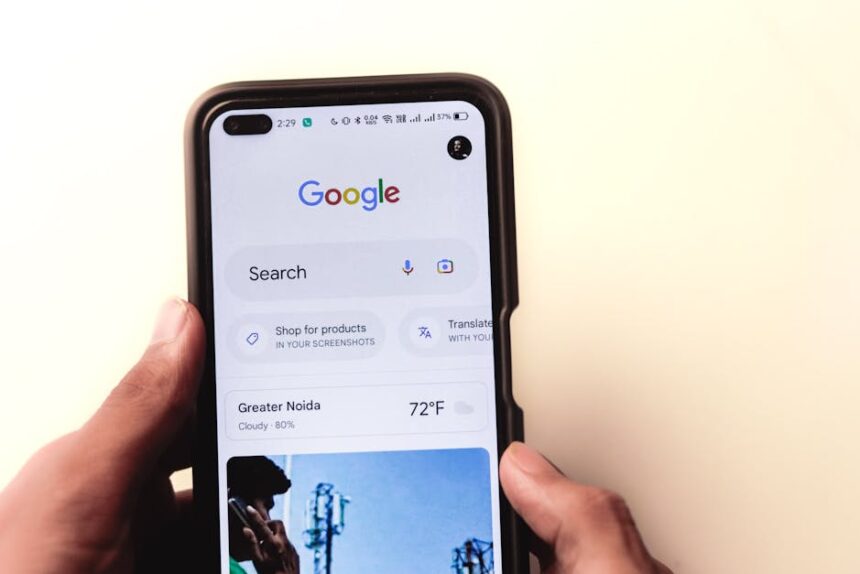The nexus of web accessibility and search engine optimization (SEO) is becoming increasingly vital for developers navigating the complex digital landscape. While traditionally viewed as separate disciplines—accessibility focusing on inclusive design for all users, and SEO on improving search engine visibility—their convergence is undeniable. Google and other major search engines increasingly prioritize user experience (UX), and fundamental aspects of web accessibility directly contribute to a superior UX, thus indirectly but powerfully impacting SEO performance. Developers are at the forefront of implementing the code that dictates both accessibility and SEO, making their understanding of this synergistic relationship paramount.
Google’s algorithms, particularly with updates like Core Web Vitals, emphasize page experience. A website that is fast, stable, and easily navigable for all users, including those with disabilities, inherently aligns with what search engines aim to promote. When a developer builds a site with accessibility in mind, they are often simultaneously optimizing it for search engines. This includes utilizing semantic HTML, ensuring proper heading structures, providing descriptive alt text for images, and making content consumable by assistive technologies. These practices enhance crawlability, improve content understanding for search bots, and ultimately lead to better ranking potential.
Semantic HTML: The Bedrock of Both Accessibility and SEO
Semantic HTML is perhaps the most fundamental and impactful area where accessibility and SEO converge for developers. Semantic elements clearly describe their meaning to both the browser and the developer. This clarity is not just for human understanding; it’s crucial for machine readability, including search engine crawlers and assistive technologies like screen readers.
Header Tags (H1-H6) and Information Hierarchy:
Proper use of header tags (H1, H2, H3, etc.) creates a logical content outline for users and search engines. For accessibility, screen readers use these headings to allow users to quickly navigate through a page’s content, understanding its structure. For SEO, search engines use heading tags to grasp the main topics and subtopics of a page, influencing how they index and rank content.
- Developer Best Practice: Use only one H1 per page, representing the main topic. Subsequent headings (H2-H6) should follow a logical, hierarchical order, not be used for styling.
- Example:
The Ultimate Guide to Web Accessibility
An in-depth look at inclusive design principles.
Why Accessibility Matters for SEO
Understanding the Google algorithm's shift towards user experience.
Core Web Vitals and Accessibility
How metrics like LCP, FID, CLS tie into inclusive design.
Incorrect usage (e.g., skipping heading levels, using H2 for a main title when an H1 exists) confuses both screen readers and search engines, hindering content comprehension and potentially impacting rankings.
HTML5 Structural Elements (nav, main, article, section, aside, footer):
HTML5 introduced a suite of semantic elements that go beyond basic divisions (
,
,
,
,
,
) provide inherent meaning.
- For Accessibility: Assistive technologies can use these landmarks to help users navigate directly to specific content areas (e.g., "skip to main content" or "navigate to navigation"). This reduces cognitive load and improves efficiency for users who rely on screen readers.
- For SEO: Search engine crawlers can better understand the structure and purpose of different parts of a webpage. This helps them identify the most important content on the page, distinguishing it from boilerplate navigation or footers. It reinforces the content's relevance and authority.
- Developer Example:
Article Title
Section Heading
Content...
Using
elements exclusively and relying on CSS for layout hides the true structure from machines, making parsing and understanding content more challenging for crawlers.Lists (ul, ol, dl) for Content Organization:
Using(unordered lists),
(ordered lists), and
(description lists) correctly enhances readability and structure.
- Accessibility: Screen readers announce lists as such, allowing users to understand that a group of related items is presented. Ordered lists are particularly helpful for steps or sequences.
- SEO: Search engines prefer structured data. Lists provide a clear, scannable format that can be easily parsed. They are often extracted for "featured snippets" or "answer boxes" in search results because of their clarity.
- Developer Tip: Avoid using CSS to simulate lists with and
tags. Stick to native list elements.Image Alt Text and Descriptive Image Filenames:
Alternative text (altattribute) for images is one of the most direct and well-known intersections of accessibility and SEO.- Accessibility: Alt text provides a textual description of an image for users who cannot see it (e.g., screen reader users, users with slow internet connections, or when images fail to load). It conveys the image's purpose and content.
- SEO: Search engines cannot "see" images. They rely on alt text and image filenames to understand what an image depicts. Relevant, keyword-rich (but not keyword-stuffed) alt text helps images rank in image search results and contributes to the overall topical relevance of the page for organic search.
- Developer Best Practice:

For decorative images, use an empty
alt=""attribute to ensure screen readers skip them. Filenames should also be descriptive (e.g.,seo-friendly-alt-text.jpginstead ofimg123.jpg).
Link Text and its Dual Role:
The text within antag is crucial for both usability and search engine understanding.-
Accessibility: Descriptive link text allows screen reader users to understand the destination of a link without needing to read surrounding context. Phrases like "click here" or "read more" are unhelpful in isolation.
-
SEO: Search engines use anchor text to understand the topic of the linked page. Rich, relevant anchor text improves the crawlability of your site and the authority passed between pages. It's a ranking signal.
-
Developer Example:
Learn about WCAG guidelines Click here
ARIA Attributes: Bridging the Gap, Enhancing SEO
Accessible Rich Internet Applications (ARIA) is a set of attributes that developers can add to HTML elements to improve their accessibility, especially for dynamic content and custom UI components that aren't inherently semantic. While ARIA doesn't directly influence SEO rankings, its positive impact on user experience can lead to indirect SEO benefits. ARIA ensures that interactive elements are understandable and operable by assistive technologies, which improves user satisfaction and reduces bounce rates—signals that Google interprets positively.
Understanding ARIA Roles, States, and Properties:
- Roles: Define the type of UI element (e.g.,
role="button",role="navigation",role="dialog"). - States: Represent the current condition of an element (e.g.,
aria-expanded="true/false",aria-checked="true/false"). - Properties: Provide additional information about an element (e.g.,
aria-label,aria-labelledby,aria-describedby,aria-haspopup). - Developer Principle: "No ARIA is Better Than Bad ARIA." Only use ARIA when native HTML elements cannot convey the necessary semantic meaning or behavior. Don't override native semantics.
When to Use ARIA (and When Not To):
ARIA is for enhancing accessibility where native HTML falls short, particularly with JavaScript-driven components.- Use when: Building custom widgets (like complex tabs, carousels, accordions, modals), dynamic content updates, or adding context to elements without inherent semantic meaning.
- Avoid when: A native HTML element already provides the necessary semantic meaning and functionality (e.g., don't add
role="button"to aelement). This is known as the "First Rule of ARIA Use" or "Don't Reinvent the Wheel."
aria-label,aria-labelledby,aria-describedbyfor Context:
These attributes provide accessible names and descriptions for elements, crucial for screen reader users.aria-label: Provides a concise, human-readable label for an element when a visible label isn't present or sufficient. Useful for icon-only buttons (e.g., a "search" icon without visible text).aria-labelledby: Refers to an element (by its ID) that serves as the label for the current element. Useful when a visible label exists elsewhere on the page.Confirm Deletion
Are you sure you want to delete this item?
aria-describedby: Refers to an element (by its ID) that provides a more detailed description or instructions for the current element.Password must be at least 8 characters long, include a number and a special character.While these don't directly tell Google what your page is about, they significantly improve the experience for users with screen readers. A positive user experience leads to longer session times, lower bounce rates, and potentially higher rankings.
Dynamic Content and
aria-liveRegions:
When parts of a page update dynamically without a full page reload (e.g., search results, validation errors, notifications), screen readers might not announce these changes.aria-liveregions instruct screen readers to announce updates to specific areas of the page.aria-live="polite": Announces changes when the user is idle, without interrupting their current task.aria-live="assertive": Announces changes immediately, interrupting the current task. Use sparingly for critical updates.- Developer Use Case:
Your message has been sent successfully!
This ensures that all users are aware of crucial page updates, contributing to a more complete and satisfying user journey, which again indirectly feeds into positive user signals for SEO.
Interactive Components: Sliders, Tabs, Modals:
Complex UI components often lack native HTML semantics. ARIA is essential here.- Tabs: Use
role="tablist",role="tab",role="tabpanel", andaria-selectedto manage their state. - Modals/Dialogs: Use
role="dialog",aria-modal="true", and manage focus correctly (trap focus within the modal when open). - Carousels/Sliders: Use
role="region",aria-roledescription,aria-live, and manage focus for navigation controls. - SEO Consideration: If interactive content within these components is critical, ensure it's crawlable even without JavaScript enabled, if possible (progressive enhancement). While ARIA helps screen readers, it doesn't always guarantee content is indexed if it's purely JavaScript-rendered and unaccessible by crawlers. Server-side rendering (SSR) or pre-rendering can solve this.
Navigational Accessibility and Crawlability
The ease with which users (and crawlers) can move through a website is a cornerstone of both accessibility and SEO. A clear, logical navigation structure enhances user experience and allows search engines to efficiently discover and index content.
Keyboard Navigation and Focus Management:
Many users, including those with motor impairments, rely solely on keyboard navigation (Tab, Shift+Tab, Enter, Spacebar) to interact with a website.- Accessibility: All interactive elements (links, buttons, form fields) must be reachable and operable via keyboard. A visible focus indicator (outline) is critical to show users where they are on the page.
- SEO: While Google doesn't directly "tab" through your site, ensuring keyboard navigability often means the underlying HTML structure is clean and logical. Furthermore, good keyboard navigation contributes to user satisfaction. If users can't easily interact with your site, they'll leave, increasing bounce rate and sending negative signals to search engines.
- Developer Tasks:
- Test all interactive elements using only the keyboard.
- Ensure custom controls (
divelements acting as buttons) havetabindex="0"and handleEnter/Spacebarkey presses. - Manage focus for dynamic content (e.g., when a modal opens, focus should shift to the modal; when it closes, focus should return to the triggering element).
- Avoid
tabindex="-1"on elements that should be focusable, unless it's for programmatic focus management. Avoidtabindexvalues greater than 0, as they create non-logical tab orders.
Skip Links: Enhancing User Flow and Crawler Efficiency:
A "skip link" (or "skip to main content" link) allows keyboard and screen reader users to bypass repetitive navigation menus and jump directly to the main content area of a page.- Accessibility: Essential for users who would otherwise have to tab through dozens of navigation links on every page load.
- SEO: While not a direct ranking factor, a skip link indicates a focus on user experience. From a crawler's perspective, it subtly reinforces that the main content area is primary and can be easily identified. It also reduces the perceived "noise" of repeated navigation links for crawlers, helping them prioritize unique content.
- Developer Implementation:
Skip to main content .skip-link { position: absolute; left: -9999px; top: auto; width: 1px; height: 1px; overflow: hidden; z-index: -9999; } .skip-link:focus { position: static; width: auto; height: auto; overflow: visible; z-index: 9999; }
Logical Tab Order:
The order in which interactive elements are focused when a user presses the Tab key should follow the visual and logical flow of the page.- Accessibility: Crucial for users who navigate sequentially. An illogical tab order is disorienting and frustrating.
- SEO: A logical tab order usually reflects a well-structured HTML document. Search engines analyze the DOM structure, and a coherent structure aids in content parsing.
- Developer Tip: Rely on the natural DOM order. Avoid using
tabindexvalues greater than zero, as they explicitly set a custom tab order that can easily become unmanageable and inaccessible.
Site Maps (HTML and XML) and Accessible Navigation:
Both HTML and XML sitemaps serve different but complementary roles in navigation and crawlability.- HTML Sitemap: A human-readable page listing all (or key) pages on a website.
- Accessibility: Provides an alternative, often hierarchical, way for users to find content, especially if they struggle with the main navigation.
- SEO: Helps crawlers discover all pages, particularly those that might be deep within the site structure or not linked prominently elsewhere.
- XML Sitemap: A file for search engines, listing all URLs to be crawled.
- Accessibility: No direct impact, as it's not for human consumption.
- SEO: Essential for informing search engines about all content on your site, its update frequency, and priority.
- Developer Action: Maintain both if appropriate for site size. Ensure HTML sitemaps are well-structured and accessible.
Media Accessibility and SEO Power
Rich media, like images and videos, enhance user engagement. Making this media accessible unlocks its content for search engines and a wider audience.
Video Transcripts and Captions: Unlocking Content for Search Engines:
Video content is becoming increasingly prevalent. However, search engines cannot "watch" a video to understand its spoken content.- Accessibility:
- Captions (and Subtitles): Text versions of the audio, synchronized with the video. Essential for deaf or hard-of-hearing users, and beneficial in noisy environments or when sound isn't an option.
- Transcripts: A full text version of all spoken words and important non-speech audio (like sound effects), presented separately. Beneficial for users who cannot access the video, or prefer to scan text.
- SEO: Transcripts and captions provide crawlable text content that describes the video's content. This allows search engines to understand the video's topic, extract keywords, and index it for relevant queries. Videos with transcripts/captions are more likely to appear in video search results and as rich snippets in organic search. They effectively turn audio content into searchable text.
- Developer Implementation:
- Use WebVTT (
.vtt) files for captions and subtitles with theelement in thetag. - Provide a separate, searchable HTML block for the full transcript below or next to the video.
- Example:
Video Transcript
[00:00:05] Welcome to our guide on web accessibility.
[00:00:10] Today we'll discuss the interplay with SEO...
- Use WebVTT (
Audio Transcripts:
Similar to video, audio content (podcasts, lectures) benefits immensely from transcripts.- Accessibility: Provides access for deaf or hard-of-hearing users, or those in situations where they cannot listen to audio.
- SEO: Converts an otherwise un-crawlable audio file into rich, indexable text content, boosting its visibility for relevant search queries.
Descriptive Audio (Audio Description):
For visually impaired users, descriptive audio narrates important visual information in a video (e.g., scene changes, actions, on-screen text) that is not conveyed through the main audio track.- Accessibility: Critical for blind or low-vision users to fully understand video content.
- SEO: While not directly providing crawlable text in the same way as transcripts, offering descriptive audio signals a commitment to comprehensive accessibility, which contributes to overall positive user signals. It can indirectly enhance engagement for a subset of users.
Performance, Core Web Vitals, and Accessibility
Google's emphasis on Core Web Vitals (CWV) — Largest Contentful Paint (LCP), First Input Delay (FID), and Cumulative Layout Shift (CLS) — underscores its commitment to user experience. Developers must recognize that performance optimizations for CWV often align directly with accessibility improvements. A fast, stable, and responsive website is inherently more accessible to all users, regardless of their abilities or connection speeds.
LCP, FID, CLS and their Accessibility Implications:
- Largest Contentful Paint (LCP): Measures when the largest content element in the viewport becomes visible.
- Accessibility Link: Faster LCP means users, especially those with cognitive disabilities or limited attention spans, can quickly grasp the main content. It reduces waiting times and frustration. Slow LCP can be particularly challenging for users on assistive technologies that need the content to be fully loaded to begin interacting effectively.
- Developer Focus: Optimize image sizes, prioritize critical CSS, defer non-critical JS, implement server-side rendering.
- First Input Delay (FID): Measures the time from when a user first interacts with a page (e.g., click a button, tap a link) to when the browser is actually able to respond to that interaction.
- Accessibility Link: Low FID is crucial for users who rely on precise timing, those using alternative input devices, or those with motor impairments. A highly responsive interface reduces perceived lag and frustration for all users.
- Developer Focus: Break up long JavaScript tasks, use web workers, minimize main-thread work, optimize third-party scripts.
- Cumulative Layout Shift (CLS): Measures the total sum of all individual layout shift scores for every unexpected layout shift that occurs during the entire lifespan of the page.
- Accessibility Link: Unexpected layout shifts are incredibly disruptive for all users. For users with low vision or cognitive disabilities, a shifting layout can make it impossible to read content, click correctly, or maintain their place. It can trigger motion sickness in some users.
- Developer Focus: Specify dimensions for images and video, avoid inserting content above existing content, use CSS transforms for animations instead of properties that trigger layout.
Optimizing for Speed: A Win-Win for All Users:
Every optimization for speed benefits accessibility. A site that loads quickly is more likely to be used by someone on a limited data plan, an older device, or with a slow internet connection—scenarios common for many users with disabilities or those in developing regions.- Developer Strategy:
- Image Optimization: Use modern formats (WebP), compress, lazy load.
- CSS/JS Minification and Compression: Reduce file sizes.
- Browser Caching: Leverage caching headers.
- CDN Usage: Serve assets faster globally.
- Server Response Time: Optimize backend performance.
- Render Blocking Resources: Eliminate or defer.
The Role of Lighthouse and Other Auditing Tools:
Google Lighthouse (integrated into Chrome DevTools) provides audits for performance, accessibility, best practices, SEO, and Progressive Web App (PWA) readiness.- Developer Use: Regularly run Lighthouse audits, paying close attention to the accessibility and SEO scores. The tool provides actionable recommendations for improvement.
- Example: Lighthouse might flag images without alt text (accessibility & SEO), or low color contrast (accessibility impacting readability & UX). It also identifies render-blocking resources that harm LCP.
- Other Tools: axe DevTools, WAVE, Siteimprove, SortSite, and manual testing with screen readers (NVDA, JAWS, VoiceOver) are indispensable for comprehensive accessibility testing.
JavaScript and Dynamic Content Accessibility
Modern web applications heavily rely on JavaScript for dynamic content, interactive elements, and single-page application (SPA) architectures. While powerful, JavaScript can introduce significant accessibility and SEO challenges if not handled correctly. Search engine crawlers (especially Googlebot) are increasingly capable of executing JavaScript, but client-side rendering introduces complexities that need developer attention.
Client-Side Rendering Challenges:
- Content Visibility: If content is entirely rendered by JavaScript after the initial page load, and the JavaScript execution is blocked or fails, search engines (and users) might not see the content.
- Crawl Budget: Heavy JavaScript execution consumes crawl budget. If a site has many pages, relying solely on client-side rendering can mean fewer pages are indexed.
- Performance: Large JavaScript bundles can delay LCP and FID, negatively impacting Core Web Vitals.
- Accessibility: Dynamic content changes without proper ARIA announcements can be missed by screen readers. Focus management becomes critical for SPAs.
Progressive Enhancement for Accessibility and SEO:
The principle of progressive enhancement advocates for building a robust, accessible foundation (semantic HTML, basic CSS) first, and then layering on JavaScript for enhanced features.- Developer Implementation:
- Ensure core content and navigation are available in the initial HTML response.
- Use feature detection to apply JavaScript enhancements.
- Provide fallback content or functionality for users with JavaScript disabled or for crawlers that don't fully execute JavaScript.
- SEO Benefit: Guarantees that essential content is always crawlable and indexable.
- Accessibility Benefit: Ensures a baseline experience for all users, including those on older browsers or with assistive technologies that might struggle with complex JavaScript.
ARIA for Dynamic Updates:
As discussed,aria-liveregions are crucial for announcing dynamic content changes to screen reader users. This ensures that users are aware of real-time updates without having to manually refresh or re-scan the page.- Developer Reminder: When content changes in a
divorspanthat is conceptually a specific UI component (like a status message), ensure it's wrapped in anaria-liveregion or its state is updated using relevant ARIA attributes.
Managing Focus for Single-Page Applications (SPAs):
In SPAs, navigation often changes the URL and content without a full page reload. This can disorient screen reader and keyboard users if focus isn't managed.- Accessibility: After a page transition or content load within an SPA, developers should programmatically move focus to a logical element, typically the main heading (
H1) of the new content. - SEO: While not a direct SEO factor, proper focus management improves the user flow and perceived quality of the SPA. If users struggle to navigate or interact, it impacts engagement metrics.
- Developer Code Snippet:
// After content loads or route changes in an SPA const mainContent = document.getElementById('main-content'); if (mainContent) { mainContent.setAttribute('tabindex', '-1'); // Make it programmatically focusable mainContent.focus(); // Set focus mainContent.removeAttribute('tabindex'); // Remove tabindex after focus }This ensures screen readers announce the new content and users can immediately interact from the top of the "new page."
Forms and Interactive Elements
Forms are critical interaction points on any website, whether for contact, login, search, or data submission. Ensuring they are accessible is paramount for user completion rates and, by extension, SEO-relevant metrics like conversion rates.
Labeling Inputs Correctly:
-
Accessibility: Every form input (
,,) must have an associated visible label (). Theforattribute of themust match theidof the input. This linkage allows screen readers to announce the purpose of the input field. -
SEO: Well-labeled forms are easier for users to complete, leading to better conversion rates. Search engines monitor user engagement signals. If users abandon forms due to accessibility issues, it negatively impacts these signals.
-
Developer Best Practice:
Placeholders are visual cues, not labels, and disappear once a user starts typing, making it hard to remember the field's purpose.
Error Handling and Validation Messages:
- Accessibility: When a form submission fails due to errors, clear, concise, and accessible error messages are crucial. They should be visually prominent and programmatically associated with the problematic input field. For screen readers, use
aria-liveregions oraria-describedbyto announce errors. - SEO: Improved user experience in error handling reduces frustration and bounce rates, encouraging users to complete forms.
- Developer Implementation:
Username must be at least 5 characters long.
aria-invalid="true"signals an invalid state, androle="alert"combined witharia-live="assertive"ensures the error message is immediately announced.
Fieldset and Legend for Grouping:
- Accessibility: For groups of related form controls (e.g., radio buttons, checkboxes), use
- SEO: A logical form structure contributes to a better user experience, which is indirectly beneficial for SEO.
- Developer Example:
Keyboard Accessibility for Forms:
- Accessibility: Ensure all form controls are fully navigable and operable using only the keyboard. This includes tabbing through inputs, selecting radio buttons/checkboxes with Spacebar, and submitting forms with Enter.
- SEO: As with general keyboard navigation, this improves UX and reduces abandonment.
- Developer Check: Manually test all forms with the Tab key and arrow keys to ensure proper flow and interaction.
Color Contrast and Readability
While not a direct SEO ranking factor, proper color contrast and overall readability significantly impact user experience, which in turn influences SEO metrics like bounce rate and dwell time.
WCAG Contrast Ratios and Guidelines:
The Web Content Accessibility Guidelines (WCAG) specify minimum contrast ratios for text and images of text to ensure readability for users with visual impairments (including color blindness and low vision).- WCAG 2.1 AA level:
- Normal text: 4.5:1
- Large text (at least 18pt or 14pt bold): 3:1
- WCAG 2.1 AAA level (enhanced contrast):
- Normal text: 7:1
- Large text: 4.5:1
- Developer Tools: Use online contrast checkers (e.g., WebAIM Contrast Checker) or browser extensions (e.g., Color Contrast Analyzer) during design and development. Lighthouse also includes contrast checks.
- Code Tip: Define color palettes with contrast in mind from the start.
body { color: #333; /* Dark gray */ background-color: #f8f8f8; /* Light gray */ /* Contrast ratio is high */ } a { color: #007bff; /* A standard blue */ /* Ensure link color has sufficient contrast with both background and surrounding text */ }
Impact on Readability for All Users:
Good color contrast benefits everyone, not just those with visual impairments. In bright sunlight, on low-quality screens, or for users experiencing eye strain, sufficient contrast significantly improves legibility.- Developer Responsibility: Don't rely solely on color to convey information (e.g., error states should have an icon or text in addition to red color).
Indirect SEO Benefits: Lower Bounce Rate, Higher Engagement:
If text is difficult to read due to poor contrast, users will quickly leave the page. This increases bounce rate and reduces dwell time—negative signals to search engines. Conversely, highly readable content keeps users engaged longer, sends positive signals, and encourages deeper interaction with the site.- UX Alignment: Google's algorithms reward sites that provide a good user experience. Readability is a core component of UX.
Mobile Accessibility and Responsive Design
Mobile-first indexing means Google primarily uses the mobile version of a website for indexing and ranking. Therefore, ensuring your mobile site is accessible is crucial for SEO. Responsive design, which aims to provide an optimal viewing experience across a wide range of devices, naturally aligns with mobile accessibility principles.
Viewport Meta Tag:
Theviewportmeta tag controls the layout and scaling of the page on mobile devices.- Accessibility: Setting
width=device-widthandinitial-scale=1.0ensures the page scales correctly. Avoiduser-scalable=noas it prevents users from zooming, which is a critical accessibility feature for low-vision users. - SEO: Google recommends using the
viewportmeta tag for mobile-friendliness. Without it, pages might render poorly on mobile, leading to poor UX signals. - Developer Code:
Touch Target Sizes:
On touchscreens, interactive elements (buttons, links) must be large enough and have enough spacing around them to be easily tappable, especially for users with motor impairments or large fingers.- WCAG 2.1 AA recommends 44x44 CSS pixels for target size.
- Accessibility: Prevents accidental taps and frustration.
- SEO: Google's mobile-friendliness tests check for adequate touch target sizes. Failing this can lead to a "tappable elements too close" warning, negatively impacting mobile UX and potentially rankings.
- Developer Tip: Use sufficient padding and margin for interactive elements.
Font Sizes and Legibility on Small Screens:
Text must be legible without requiring excessive zooming on mobile devices.- Accessibility: Use relative font sizes (e.g.,
remorem) that scale with user preferences. Ensure minimum font sizes are met (e.g., 16px base font size for body text is generally good). - SEO: Google penalizes sites with illegible font sizes on mobile, flagging them as "text too small to read."
- Developer Advice: Test your site on various mobile devices and emulators to check readability.
Responsive Images:
Images should adapt to different screen sizes and resolutions to maintain visual quality and performance.- Accessibility: Ensures images are appropriately sized and legible on all devices. Combined with good alt text, it provides a consistent experience.
- SEO: Responsive images using
srcsetandsizesattributes, or theelement, improve page load performance (by serving appropriately sized images), which is a Core Web Vital factor. - Developer Markup:

Legal Compliance and Reputation
While directly linking legal compliance (like ADA or WCAG) to specific SEO ranking factors can be challenging, a site's adherence to these standards builds trust, enhances brand reputation, and prevents costly litigation, all of which indirectly support long-term SEO success.
Understanding ADA, WCAG, and Other Regulations:
- Americans with Disabilities Act (ADA): In the U.S., the ADA requires businesses to provide equal access to individuals with disabilities, extending to websites. While specific technical standards aren't explicitly outlined in the law, WCAG 2.1 AA is widely considered the de facto standard for web accessibility.
- WCAG (Web Content Accessibility Guidelines): Internationally recognized guidelines developed by the W3C. They provide a comprehensive set of recommendations for making web content more accessible. WCAG has three conformance levels: A, AA, and AAA. AA is typically the target for most organizations.
- Other Regulations: Depending on the region or industry, other laws may apply (e.g., Section 508 in the U.S. for federal agencies, EN 301 549 in Europe).
- Developer Takeaway: Familiarize yourself with WCAG principles and integrate them into your development workflow.
Brand Perception and Trust:
A commitment to accessibility signals a socially responsible and inclusive brand.- For Users: Users with disabilities, their families, and advocates are a significant demographic. An accessible site builds loyalty and positive word-of-mouth.
- For Businesses: Demonstrates ethical practices, enhancing brand reputation, which can lead to more backlinks, social shares, and positive mentions—all factors that indirectly influence SEO.
- Developer Role: Advocate for accessibility within your organization. Emphasize that it's not just a legal checkbox but a strategic investment in a wider audience and positive brand image.
The Cost of Non-Compliance vs. Investment in Accessibility:
- Cost of Non-Compliance: Lawsuits related to web accessibility are on the rise globally. Non-compliant websites face significant legal fees, settlement costs, and reputational damage. Retrofitting an inaccessible site is far more expensive and time-consuming than building it accessibly from the start.
- Investment in Accessibility: Integrating accessibility from the ground up saves money in the long run. It leads to better code quality, improved UX for all users, broader audience reach, and positive brand recognition.
- SEO Alignment: Avoiding legal issues means no negative press or site takedowns. A site known for its quality and inclusivity is more likely to be linked to and shared, naturally boosting its SEO authority.
Advanced Topics & Future Outlook
The field of web accessibility is continuously evolving, and developers need to stay informed about advanced techniques and emerging trends to maintain optimal accessibility and SEO performance.
ARIA Authoring Practices Guide (APG):
The WAI-ARIA Authoring Practices Guide (APG) is an essential resource for developers building accessible rich internet applications. It provides detailed design patterns and example code for common UI components (e.g., accordions, menus, dialogs, trees).- Developer Benefit: The APG shows how to correctly implement ARIA roles, states, and properties, as well as keyboard interaction for complex widgets. Following these patterns ensures consistency and predictability for assistive technology users.
- SEO Impact: By using established, well-tested ARIA patterns, developers minimize the risk of creating custom components that are inaccessible, thereby supporting user experience and engagement.
AI in Accessibility and SEO:
Artificial intelligence is playing an increasing role in both accessibility and SEO.- AI for Accessibility: AI-powered tools are emerging for automated alt text generation, video captioning, and even personalized accessibility adjustments based on user profiles. While promising, developers must be cautious; AI solutions are often not a complete substitute for human oversight and manual testing to ensure accuracy and context.
- AI for SEO: Search engines use AI (like Google's RankBrain and MUM) to better understand user intent and content. Accessible content, being well-structured and semantically rich, is inherently easier for AI algorithms to process and categorize. AI also helps search engines interpret user behavior signals, which are positively influenced by accessible designs.
- Developer Role: Leverage AI tools as aids, but never fully delegate accessibility. Focus on creating robust, semantic HTML that AI can easily parse and understand.
Personalization and User Preferences:
The future of the web leans towards more personalized experiences.- Accessibility: Users increasingly expect to customize their browsing experience (e.g., dark mode, high contrast, larger text, reduced motion). Developers can expose these options using CSS
prefers-color-scheme,prefers-reduced-motion, etc. - SEO: A site that adapts to user preferences offers a superior user experience, which leads to higher engagement and satisfaction. Google values personalized experiences and adaptability.
- Developer Implementation: Implement CSS media queries for user preferences. Provide UI controls for common accessibility settings if your site has specific needs.
The Holistic View: Accessibility as a Continuous Process:
Accessibility is not a one-time task but an ongoing commitment. Websites are dynamic, content changes, and new features are added.- Continuous Integration/Continuous Deployment (CI/CD): Integrate accessibility checks into your CI/CD pipeline using automated tools.
- Regular Audits: Perform regular manual and automated accessibility audits.
- User Feedback: Solicit feedback from users with disabilities.
- Training: Ensure development teams are continuously educated on accessibility best practices.
- SEO Synergy: A continuous commitment to accessibility means continuous improvements to user experience, performance, and semantic structure—all elements that consistently contribute to better SEO. It positions your site as an authority and a valuable resource for all users, a quality that search engines strive to reward with higher visibility.
By embracing accessibility as an integral part of the development process, developers not only build more inclusive and ethical web experiences but also lay a powerful foundation for robust, long-term SEO success. The two disciplines are inextricably linked by their shared goal: providing a high-quality, efficient, and enjoyable experience for every user, which ultimately aligns perfectly with what search engines prioritize for ranking. Developers are the architects of this synergy, and their expertise in building accessible, semantic, and performant web properties directly translates into tangible SEO advantages in an increasingly user-centric web.











